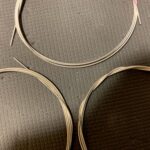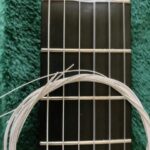This post is also available in:
![]() 日本語 (Japanese)
日本語 (Japanese)
I’ve just realized that I’ve written more than 70 articles about classical guitar string reviews on this site. To celebrate this, I’d like to introduce some of the strings I’ve used and recommend. If you’ve never been particular about your classical guitar strings, you should definitely give them a try. If I find good strings, I’ll update this page accordingly.

The following article summarizes the string reviews/impressions/information articles in this blog

Basic knowledge of classical guitar strings and how to choose them
First, let’s talk about the basics of strings for classical guitar.
High-pitched strings that used to be made of sheep intestines
The treble strings are the higher three of the six strings.
This treble string, the It used to be made of sheep’s intestines (gut). However, because they are natural, they are expensive and their quality is not stable. However, because it is a natural product, it is expensive and the quality is not stable.
This is where nylon comes in. It is made chemically Nylon is inexpensive and stable in quality. so it quickly became mainstream. Nowadays, sheep gut strings are almost never used, except in special cases.
The problem with nylon is that the sound tends to be muffled, especially on the third string, so newer materials such as carbon and titanium strings have emerged. Some say that they are too harsh, but they are also very loud and are accepted by many professional guitarists.
See also this article for more information on treble strings:
A bass string with a core wire wound with metal.
Bass strings, on the other hand, have a structure consisting of a bundle of thin fibers called the core wire, wound with metal wire.
In the past, the core wire was made of silk thread, but this is still a natural product, so it is expensive and not stable. So, nowadays A bundle of nylon or other chemical fiber is used. In the past, the core wire was made of silk thread.
The metal wire is mostly a copper alloy with silver plating.
See also this article about bass strings:
The strength of the tension varies.
The strength of the tension when the string is pressed or plucked varies.
As you can see, weak strings are easy to hold and play, but they don’t produce much volume, while strong strings do the opposite.
Also, the one with less tension tends to produce a softer sound, and the one with more tension tends to produce a firmer sound.
amateur guitarists, in general. Strings with less tension, from normal tension to light tension, are easier to handle. think.
However, there is also the compatibility with the instrument and the player, so it is recommended that you try both.
Prices range from about 1,000 yen to 2,000 yen.
Like the classical guitar itself, the price of strings varies.
It does not necessarily mean that the more expensive strings produce a better sound. The more expensive the strings are, the more special the materials and manufacturing process are, and the more distinctive the sound. The higher the price, the better the sound. In many cases, they are also particular about the life span of the strings.
In general 1,000 to 2,000 yen per set (1 to 6 strings) is the usual market price for strings. In general, the price for a set of strings is 1,000-2,000 yen.
However, some strings are more expensive than this, while others are cheaper.
It is hard to say whether cheaper or more expensive is better, as it depends on each person’s sense of value and financial strength. However, it is certainly interesting to try out cheap or expensive ones once.
4 Recommended Classical Guitar Strings
Let’s take a look at some specific classical guitar strings that I recommend. Each one has its own personality and characteristics, and you will be amazed at the difference you will make when you replace them.
Savares Creation Cantiga Premium Normal Tension

The first one is Creation Cantiga Premium Normal Tension by Sabares, a French string manufacturer.
The problem is that the name is so long that it is hard to remember.
This string has good bass string holding and good sound. They last a long time and are cost-effective as a result. This is a good string to have.
There is also a version without the “Premium” label, but it has a different bass weight compared to that version. The sound of the 6th string is particularly strong and supports the music from below.
The treble strings are unusual for a set of strings like this: the first and second strings are nylon strings, while the third string is carbon. You can enjoy the sweet sound of the nylon strings while avoiding the blurred sound of the third string. The third string is carbon. Professional guitarists often use these strings, but it is rare for a manufacturer to sell them as a set.
For a review of this site, see here:
Figaro Blue + Clear
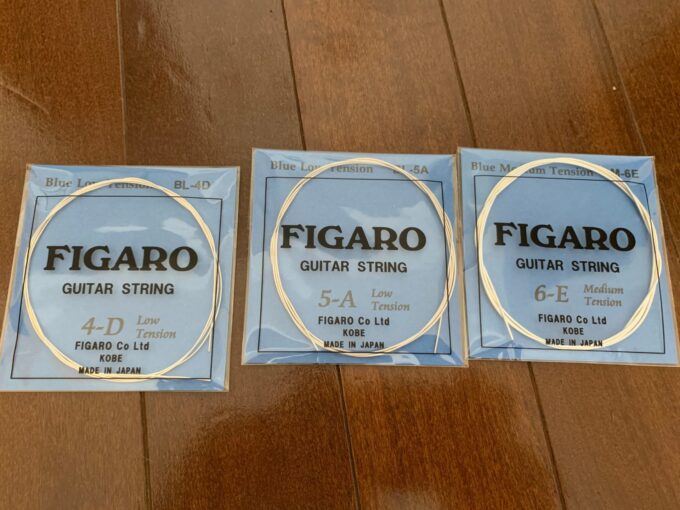
These strings are made by a Japanese string manufacturer, the pride of Japan.
The price is high, but that’s because of the quality of the materials and the manufacturing process. The life span is also long, so the cost performance is not that bad.
The bass strings have a core wire coated with pine resin. It’s not a flashy sound, but it’s got a solid core. It’s not a flashy sound, but it has a solid core and is full of flavor. The bass strings are coated with pine resin.
The treble strings are nylon on the first and second strings, and carbon on the third, and the carbon string on the third does not sound harsh at all. The fourth, third, and second strings are well connected. The third carbon string does not sound harsh at all.
I also had the impression that all the strings were in total harmony. I enjoy playing music. I had the impression that it was a total package. It’s a string that will follow the sound you want to make and the music you want to play.
See the following article for a review of this site:
Dougal Diamante Extra Soft
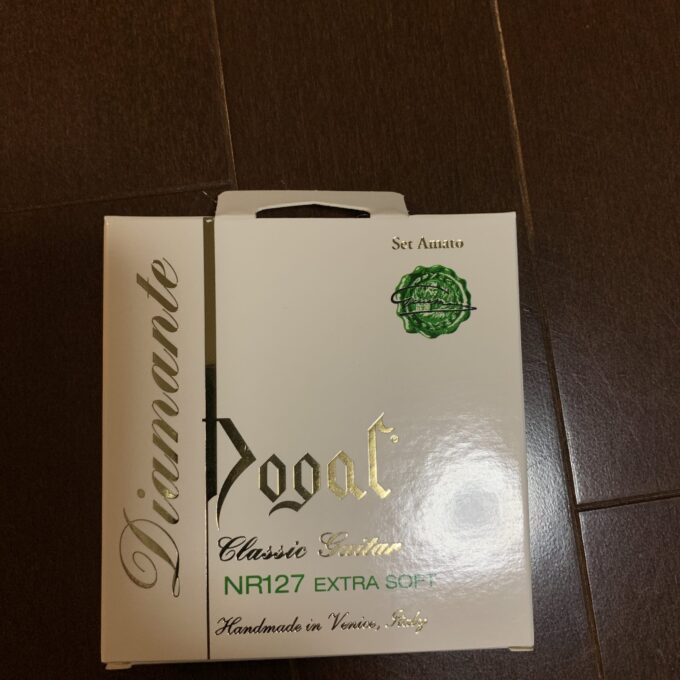
These are classical guitar strings from the Italian string manufacturer Dougal.
Dougal is not a major player in classical guitar, but is a famous string maker for violins and mandolins.
These strings are very easy to play. Low tension and easy to play. This string is characterized by its low tension. As the name “Extra Soft” suggests, these strings have the lowest tension of all the strings I’ve used.
And yet, the sound is solid, which is what I recommend. It uses special materials, such as nylon with carbon added for the treble strings and Kevlar, a fiber used in speakers, for the core wire of the bass strings, which is unique.
Unfortunately, this extra software is not available in Japan, and must be imported from overseas mail order sites such as Strings by Mail.
Please refer to the following article for a review of this site:
Hanabach Exclusive Medium Tension
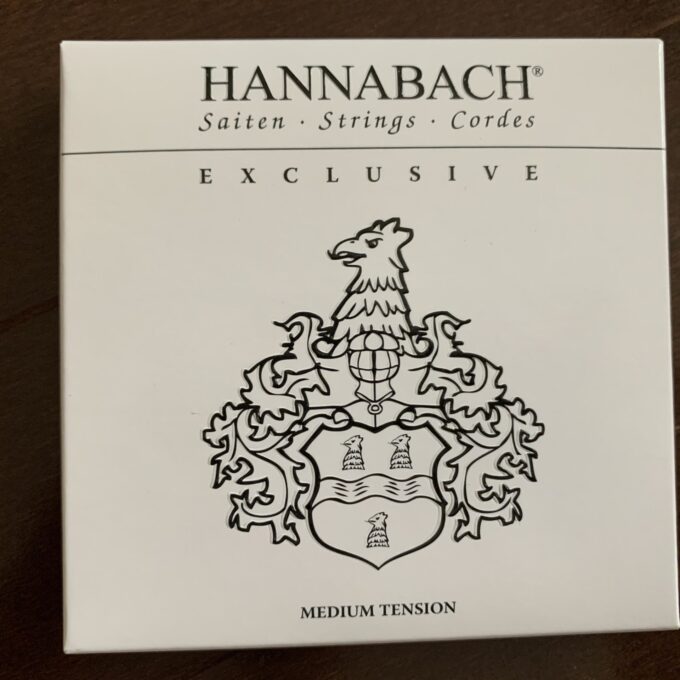
These are high-grade strings from Hannabach, a German string manufacturer.
The price is quite high, but that’s why the bass strings are plated with a high silver content and the core wire is made of a new material. The first and second strings are made of nylon, but the third string is made of titanium to prevent the sound from becoming blurred.
The sound is just My impression is that it is a straightforward evolution of the “classical guitar” sound. The sound is just… The sound is a side-to-side sumo. I have the impression that the strings vibrate beautifully.
The drawback is that it is a bit expensive, but it is the kind of string that you will want to use when the occasion calls for it.
For a review article on this site, please refer to this article:
All of these strings should be used at least once.
There are people who love classical guitar but always use the same old Pro Arte or Augustine strings. It is true that Pro Arte and Augustine are good strings, but in this age of friendly competition, new strings are being released one after another.
I have used more than 70 different types of strings, and I am confident in recommending all of them. Once you try them, they may change your world of classical guitar.
But to be honest, it was quite a difficult task to narrow down the list from more than 70 types of strings. There are many more strings that I would like to introduce…. There are many more strings that I would like to introduce… You can check them out here.
















